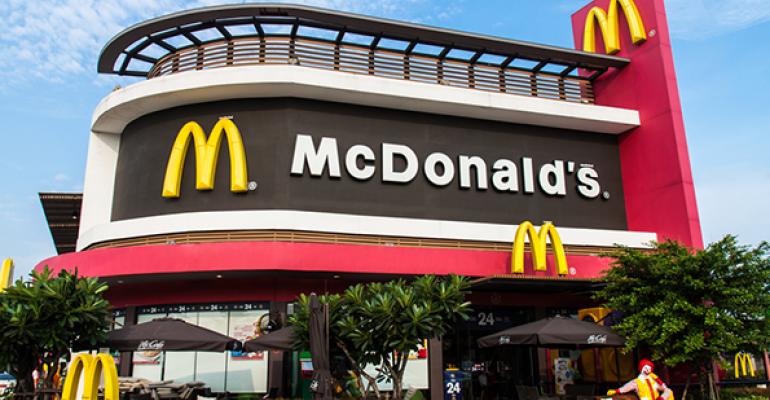(Bloomberg View)—Every Western city's food scene seems slowly to be turning into a carbon copy of every other: The same global fast-food chains selling hamburgers and fried chicken with only modest concessions to local tastes.
Chains would seem to be the wave of the future. Certainly in the U.S.: A recent report by NPD Group tells us that in the last year, the number of independent restaurants declined by 3 percent, while the number of chains increased by 1 percent. Also globally: Fast-food chains are projected to grow worldwide at a breakneck pace.
And yet last week it was suggested to me -- by someone who thinks about food for a living -- that chains are on the brink of their sunset years. This isn’t a ridiculous theory. Consider why chains emerged in the first place.
In restaurants, the economies of scale are not immediately obvious. Cooking food to order is an inherently labor-intensive business, with limited scope for productivity gains and with immense need for local, hands-on management to ensure that the employees don't poison the customers or let the bathrooms get into a state.
Of course, fast-food restaurants do wring out economies of scale, by bulk processing ingredients into precisely identical units of production. But they do so by sacrificing quality. Given the added layers of bureaucracy needed to manage such a large enterprise, the independent restaurant should have a fighting chance.
They do stand a chance when they build a local following. But many customers aren't buying meals near home; we're turning to restaurants when we're away from our known turf. Quite often, in that situation, we really just want to know what we're getting. Even the best chain food (and facility, and service) will not be as good as what you'd find at a really good local place. On the other hand, even the worst chain food (and facility, and service) is not as bad as what you get a bad local place.
And those bad local places tend to be concentrated where people were away from their local networks. Near hotels in tourist districts. On thruways. Around airports and bus and train stations. (To this day, the area around New York's Penn Station remains a festival of horrors for the aspiring diner.) Most customers in these areas aren't going to come back to the restaurant very often no matter what the restaurateurs do or how fair the prices, so there's no incentive to emphasize quality or value.
Chains solve that problem. First of all, at the price of losing some upside potential, you minimize your potential downside, because you know pretty much exactly what you'll be getting. People tend to care more about avoiding bad outcomes than about potentially seizing good outcomes, so this is a valuable trade.
Chains have a greater incentive to prevent bad experiences for customers. That place on Route 66 where you stopped this summer? You remember, the one where you got food poisoning? The owner isn't worried that you'll never come back.
But McDonald's really, really cares whether you had a bad burger at one of its locations. Because if you have a bad burger at one McDonald's, you may choose not to stop at any of the thousands of other McDonald's you will pass by in the years ahead. So the chain invests in delivering consistent food, and consumers value this.
That explains the rise of the chain. But why would anyone consider them to be nearing their apex?
Twenty years ago, whenever I went abroad, I was pretty much at the mercy of the local merchants. Now, before I eat anywhere, I check out reviews on TripAdvisor and Yelp. That's great for me; I've found some pretty good restaurants that way. But it diminishes some of the value of a brand.
That said, I'm not sure we are at Peak Chain. Consider a story spawned by that NPD report: a New York Times peek into the math of operating a restaurant in the city. That math is daunting. Real estate prices are enormous. Labor costs are high, and set to rise, thanks to new minimum wage laws. And of course, the food itself ain't cheap either. (Together, these three generally account for about 75 percent of a restaurant's costs.)
Nor is New York the only city with rising real estate prices, high labor costs, and legislators aiming to raise labor costs further. That describes a lot of America's most populous places, and not a few cities elsewhere. In developing countries, labor is becoming more expensive not necessarily because legal minimums are rising, but because there are more alternate jobs.
Regardless of the source of the expense, who benefits from that sort of math? Chains.
They may not get manufacturing-like economies of scale. But they can buy ingredients in bulk, shaving their food margins, and they can prep ingredients en masse, or even cook the food at exurban locales where land is cheap and labor plentiful. That economizes on both labor and kitchen space in higher-cost areas where they want to sell food.
So while I would like to think that the future is artisanal, local and unique, I suspect that it is actually bland, inoffensive and globally recognizable. The adventurous eater can check Yelp for alternatives -- and hope that the listings for all the good places aren’t marked “closed.”
This column does not necessarily reflect the opinion of the editorial board or Bloomberg LP and its owners.
To contact the author of this story: Megan McArdle at [email protected] To contact the editor responsible for this story: Philip Gray at [email protected]
For more columns from Bloomberg View, visit Bloomberg view
COPYRIGHT
© 2016 Bloomberg L.P

